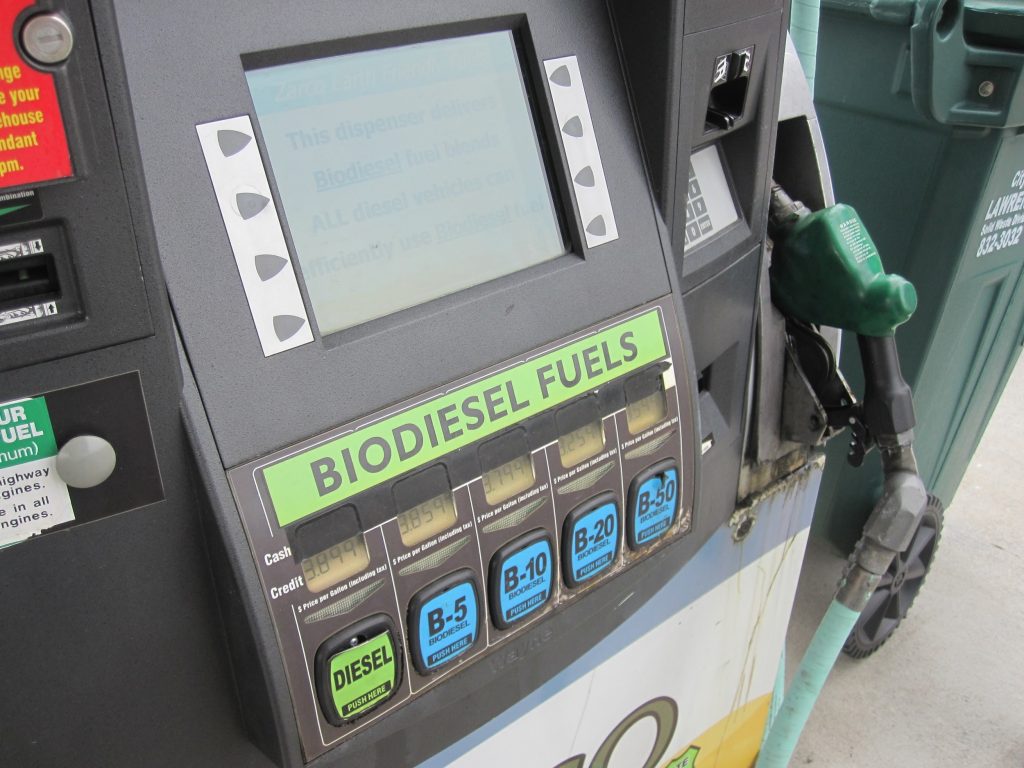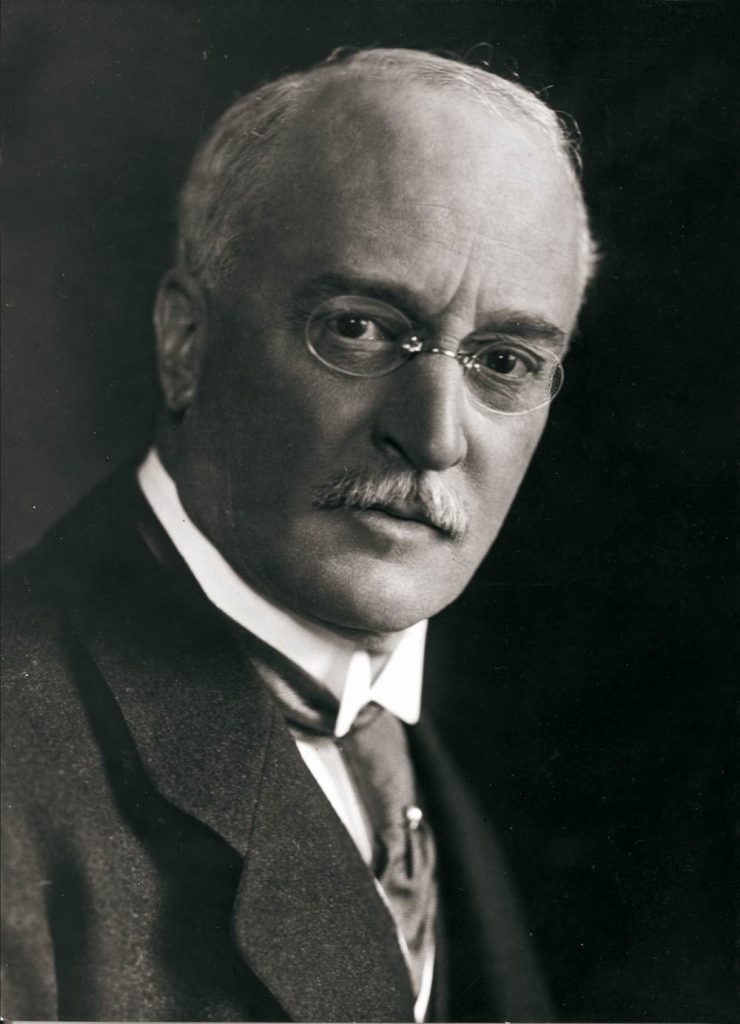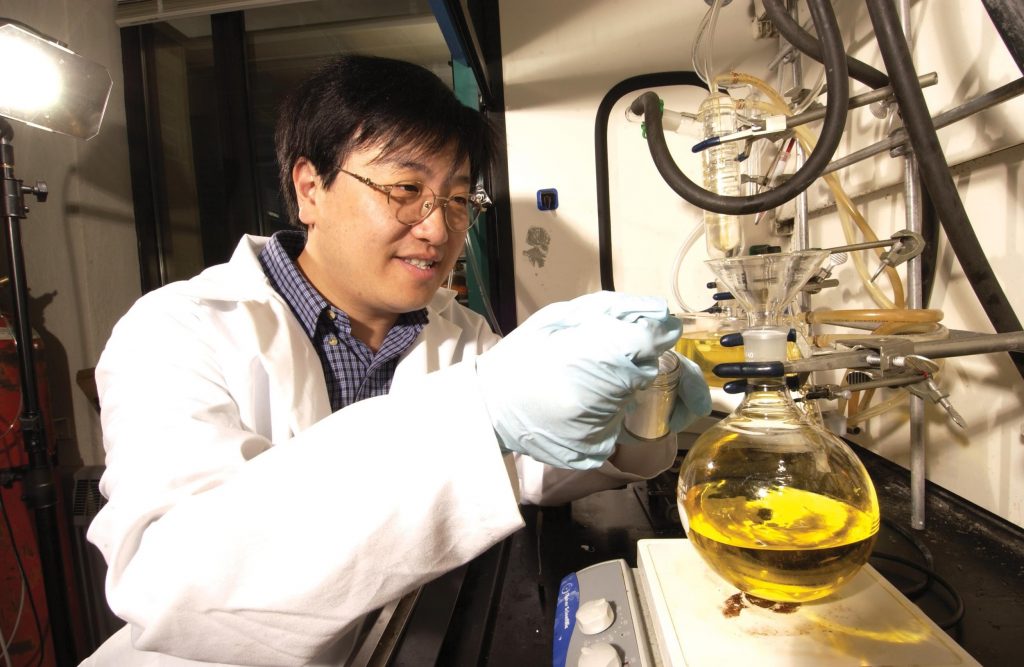InTrans / Nov 13, 2017
Fuel for thought: Biodiesel
Go! Magazine
 posted on November 13, 2017
posted on November 13, 2017
For the first time since 1979, cars, buses, trucks, and airplanes in the United States are emitting more carbon dioxide (CO2) than US power plants.
CO2 emissions in the US from the transportation sector reached 1,893 million metric tons (MMmt) from October 2015 through September 2016, exceeding electric power sector CO2 emissions during the same time, which measured in at 1,803 MMmt.
Although transportation emissions had remained relatively “flat” since the early 2000s, possibly due to more fuel-efficient vehicles and people choosing to live in cities, emissions have slowly began to rise in the past couple of years. That said, there are many alternatives to traditional petroleum fuel.
Biofuels
Did you know that transportation can run on vegetables? Well…it’s not that simple, but there are liquid fuels called “biofuels” that are derived from organic matter and can be used to power our vehicles and address our other electric needs.
Biofuels can be used in place of traditional fuels like gasoline, diesel, and jet fuel. Unlike these “fossil” fuels, which take millions of years to form, biofuels can be produced quickly, in a matter of days, weeks, or months, rather than over millions of years. Biofuels include fuels you may have heard of, like ethanol and biodiesel.
In this article, we’re looking at biodiesel. Biodiesel is a renewable fuel made for a diesel engine. Unlike ethanol, which can be used in most gasoline engines, biodiesel is for diesel engines only. It is produced from a chemical reaction called “transesterification,” which is made from organic sources like soybean, sunflower, and canola vegetable oils.

Inventor profile: Rudolf Diesel
Although biodiesel is gaining popularity today, the concept is anything but new! In the 1890s, Rudolf Diesel developed the diesel engine to “improve upon the inefficient, cumbersome, and sometimes dangerous” steam engines of the late 1800s. Diesel was known worldwide for his engine, which could run on a variety of fuels.

One of the first people to experiment with biodiesel was Diesel himself. He envisioned early on that vegetable oils could be used to power diesel engines across the world, especially in remote areas where petroleum fuel was not always available. He originally designed the diesel engine to run on peanut oil.
Renewability
Biodiesel has many features that make it more attractive than petroleum fuels—and more renewable.
For example, research shows that biodiesel exhaust is less harmful on human health than petroleum diesel. Emissions from biodiesel fuel have smaller levels of potentially carcinogenic compounds.
Biodiesel is also better for environmentally-sensitive areas. It has been shown to reduce carbon dioxide emissions by 78 percent, according to a 1998 biodiesel lifecycle study jointly sponsored by the U.S. Departments of Energy and Agriculture.
For every unit of fossil energy it takes to make biodiesel, 3.2 units of energy are gained, making it one of the most efficient alternatives to petroleum fuel. Biodiesel has the highest “energy balance” of any transportation fuel.
Advantages
On top of being more efficient and safer than other types of fuels, biodiesel has other advantages too!
For starters, biodiesel reduces US dependence on 100 percent imported fuel sources. It is also safer to handle and transport than traditional petroleum fuel. Biodiesel is also an economic way to make good use of the surplus of soybeans in the United States.

Biodiesel is also relatively accessible to those with a diesel engine who want to use it. Biodiesel can typically be used in existing diesel engines and oil heating systems without having to modify the engine or system. This gives it an advantage over other energy alternatives, which may require high-cost equipment upgrades and modifications in order to be used properly.
Disadvantages
However, biodiesel also comes with a list of disadvantages.
Firstly, it’s almost 1.5 times more expensive than petroleum diesel. Also, even though biodiesel can be more efficient than petroleum, it takes additional energy to sow, fertilize, and harvest the crops used to make it.
Biodiesel can also be damaging to some engines, specifically cars built before 1994. And dirt cleaned from the engine and tank, through the use of biodiesel, can collect in the vehicle’s fuel filter and cause it to clog.
Biodiesel also comes with limitations. For example, it is not distributed as widely as petroleum diesel, making it harder to use or rely on. Also, fuel that is comprised of 100 percent biodiesel can’t be used in the winter, as it becomes too thick in the cold temperatures.
Fuel for thought
Although biodiesel is not the end-all-be-all solution to reducing harmful CO2 emissions, it’s generally seen as a better alternative to petroleum-based fuels due to the fact that it has lower emissions, is less toxic, and can be produced faster than petroleum.
It also lessens our dependence on imported fuel and benefits the economy by keeping production here in the United States. The biodiesel industry is supporting nearly 48,000 jobs domestically.
Now that you have “the know” on biodiesel, what do you think? Did you know products like soybeans and other vegetables could be transformed into something you could use to power your vehicle? In the future, will you choose biofuels over petroleum? Browse the links below to decide for yourself!
References
gdintegrated.com/2016/04/28/top-10-interesting-facts-transportation/
www.youtube.com/watch?v=ZGmwtDffc74
www.biodiesel.com/biodiesel/history/
www.c2es.org/energy/use/transportation
www.pbs.org/now/shows/302/biodiesel.html
biodiesel.org/what-is-biodiesel/biodiesel-basics
Related links
(Video) Biofuels 101: www.youtube.com/watch?v=ZGmwtDffc74
(Video) Science in 1 minute: How is biodiesel made?: www.youtube.com/watch?v=9bYOMg9TgDQ
By Hannah Postlethwait, Go! Staff Writer